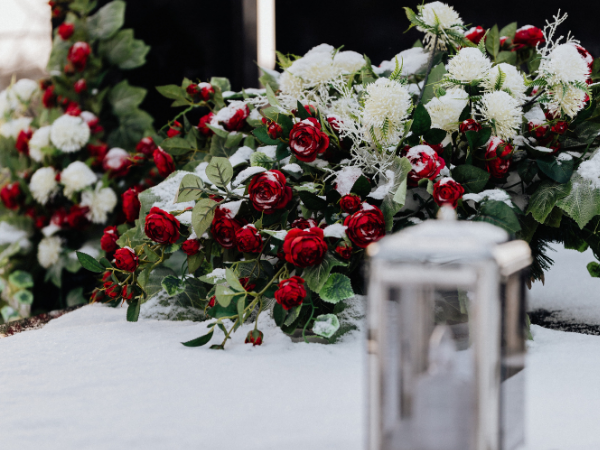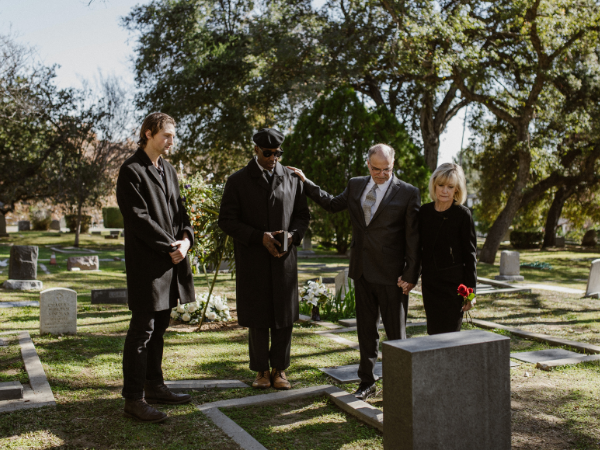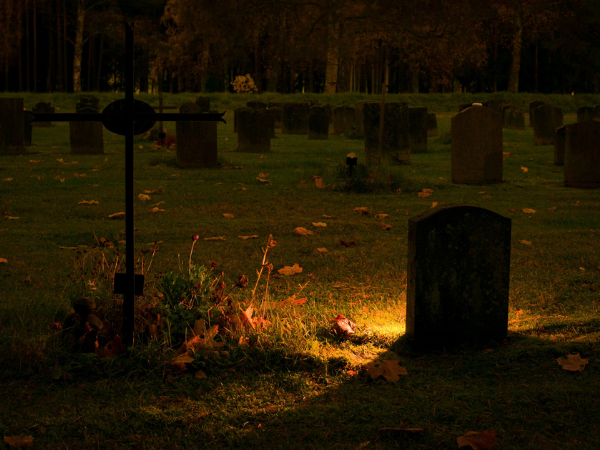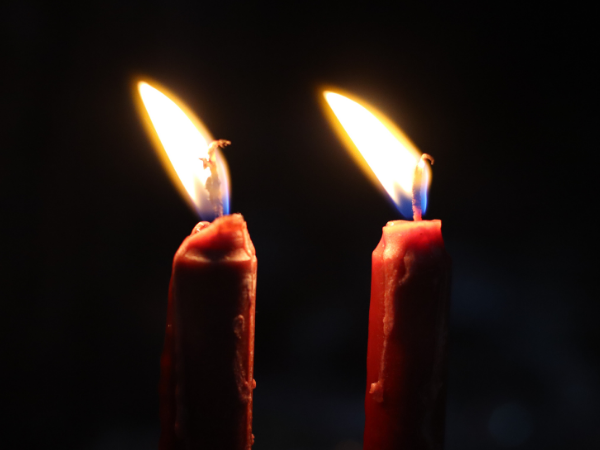How much does a funeral cost?
When a loved one dies, funeral costs are the last thing on their minds. Bereavement is a painful experience for anyone. People need a moment to process the overwhelming emotions that come with grieving. More importantly, they want to say goodbye to their friend or relative with a proper burial.
Funeral arrangements often come with hefty costs, though. We’ll discuss the usual fees involved in funeral arrangements. Also, we’ll cover some of the additional services and products available. Then, we’ll explain the payment options that may reduce the financial burden from these costs.
When people are mourning, it can be challenging to analyze funeral costs. However, proper funerals and burials have underlying costs. Understanding the fees for the products and services helps the bereaved conduct the ceremonial rites. This facilitates planning a funeral that befits those who have passed away.
What are the usual funeral fees?

The Federal Trade Commission (FTC) provides a list of the typical funeral costs. These are categorized as necessary services fees, cash advances, and other charges.
Necessary services fees include services that are usually included in all funerals. Note that the fee doesn’t cover optional merchandise nor services:
- Funeral planning
- Securing permit requirements and death certificates
- Creating notices
- Sheltering remains
- Coordinating with the cemetery, crematory, or third parties
What’s more, funeral costs may include these other merchandises and services like:
- Transporting the deceased
- Preparations such as embalmment
- Reserving a funeral home for viewing the remains
- Renting a limousine or hearse
- Acquiring an outer burial container
- Interment or cremation costs
Lastly, funeral homes may charge cash advances for products and services. They could purchase it from outside vendors on behalf of a bereaved person:
- Flowers
- Obituary notices
- Pallbearers
- Soloists and organists
- Officiating clergy
Funeral services and products
Other services and products may add to the overall funeral expenses. Someone who lost a loved one could pay for embalmment, caskets, burial vaults, and other preservation methods.
Funeral providers may have different goods, services, and prices from one another. People should inquire at their chosen funeral provider for more information.
The FTC’s Funeral Rule gives them the right to receive a list of estimated prices from a funeral provider. All these should be written in a statement along with other legal requirements.
Clients should receive accurate prices for memorial services and other details. They’re free to ask all pressing questions to their funeral providers.
Related Articles
Everything You Need to Know About A Credit Card Limit
Can You Get COVID More Than Once?
Have Medical Debt? Here is What to Do
Embalmment
Funeral homes may require embalming if the bereaved is planning for a visitation or viewing. If the remains will be cremated or buried shortly after death, embalmment mostly isn’t needed.
People may skip this service to save significantly in funeral costs potentially. Funeral providers must comply with specific requirements under the FTC Funeral Rule:
- Providers must gain permission before embalming.
- They are required to avoid stating that it’s a government requirement.
- They should state in writing that this procedure isn’t required by law, except in special cases.
- Providers must disclose that people are free to choose a traditional burial or cremation for their deceased loved one. This should be jotted down on a written statement. Furthermore, these options do not require embalmment if the client doesn’t want the service.
- They must state in writing that embalmment is a required purchase for specific arrangements. For example, it’s a requirement for a funeral with viewing since it becomes a practical necessity.
Caskets
A considerable portion of funeral costs is allocated for caskets. It’s often the most expensive item a bereaved person will purchase for a “traditional” funeral and burial.
The average costs run at around $2,000. However, people may choose pricier ones made of mahogany, copper, or bronze for as much as $10,000.
For those who recently lost a loved one, studies show that they usually select from 3 options. What’s more, they typically choose the middle-priced casket.
This encourages sellers to show expensive models first. In response, people should ask for more affordable options instead of picking from their recommendations outright.
Back then, only funeral homes sold caskets. Nowadays, people may purchase from third-party dealers on the internet.
The Funeral Rule requires them to allow any casket chosen by clients. They must not charge any amount for the use of caskets from outside providers.
The FTC also discourages people from buying “sealed” or “protective” caskets. The Funeral Rule prohibits claims of its ability to preserve remains indefinitely.
The Federal Trade Commission reminds the public that no casket can preserve a body forever. Some of them only serve as unnecessary additions to funeral costs.
Grave liners or burial vaults
Some people pay for burial containers for traditional full-service funerals. It’s placed in the ground before the burial. Then the casket will be lowered into it.
It’s meant to prevent the ground from caving in the casket as it deteriorates. People may include grave liners or burial vaults to the funeral costs.
The former is made of reinforced concrete, so it’s usually the more affordable option. On the other hand, burial vaults consist of different materials that add to their price.
People should remember that state laws don’t require their use. However, cemeteries may require a burial container to prevent the grave from sinking further eventually.
Moreover, it’s illegal for them to claim that vaults could keep outside elements away from the remains. Neither liners nor vaults can prevent the decomposition of the remains inside.
A funeral provider must provide a list of burial container options. Although, people may save on funeral costs by purchasing from third-party dealers.
Preservation products and processes
Historians date the practice of embalming the dead from the time of the ancient Egyptians. They also found that other civilizations from the past have their ways of preserving the dead.
In response, the Funeral Rule forbids funeral providers from offering it to clients as an option. After all, there’s no evidence that it can perform its intended purpose.
They’re also prohibited from claiming that embalmment can preserve remains forever. Bodies decompose no matter what burial container is used.
What are the current estimates for funeral costs?
According to the National Funeral Directors Association (NFDA), the median funeral cost totaled $5,150 in 2019.
Here are some additional statistics regarding the average funeral costs: financia
- Cost of cremation = $6,645
- Cost of burial = $7,640
- Non-declinable service fee = $2,195
- Cost for transporting the body to a funeral home = $350
- Embalmment cost = $750
- Total for preparatory fees = $255
- Total costs for facilities and staff = $425
- Printed memorial programs = $175
- Total for renting a funeral service vehicle = $340
- Casket price = $2,500
- Vault price = $1,495
- Cremation casket = $1,200
- Urn = $295
- Burial plot = $1,000 – $4,000
- Interment fees = $1,000
- Headstones/grave markers = roughly hundreds to thousands of dollars based on the design
- Wreath – around hundreds of dollars
How to prepare for funeral costs
People are averse to discussing funerals and similar subjects. Death is an uncomfortable topic for most folks, let alone preparing funds for their funeral.
However, the American Association of Retired Persons (AARP) recommends saving early for this inevitable part of life. Those they leave behind might not be able to pay for a funeral.
They said that most people leave money in their will, thinking that it could cover the costs. However, AARP reminds us that it’s inaccessible for several months.
Most funeral homes require a full upfront payment. Early preparations help their survivors pay for a funeral should the need arise. Here are some ways to prepare for funeral costs:
Insurance
The most well-known method is paying for life insurance. These policies could pay a lump sum upon death to a designated beneficiary.
Other insurance options may not seem familiar to most people. Aside from life insurance, people may buy burial insurance and pre-need insurance.
Burial insurance policies are meant for death-related costs. Pre-need insurance is another policy option. It’s used to cover a set amount for funeral costs.
However, the Funeral Consumers Alliance (FCA) discourages purchasing burial and pre-need insurance. People often end up paying more in premiums than the policy could provide.
Payable-on-Death (POD) Account
This type of bank account enables people to save for their funeral. It assigns access for someone they trust so that that person could use it for funeral costs.
The beneficiary cannot use the account while the person still lives. However, the account holder could freely withdraw or deposit funds anytime.
POD accounts are otherwise known as Totten Trusts. The account holder should entrust the funds to a trustworthy person who will truly use them for funeral costs.
Funerals during the COVID-19 pandemic
The coronavirus pandemic continues to take lives around the world. Unfortunately, the COVID-19 crisis makes traditional funeral practices difficult.
In response, the Centers for Disease Control and Prevention (CDC) released guidelines for funerals during the pandemic. These should be considered while planning funeral costs.
No matter what type of funeral, attendees should wear masks and maintain social distance. As much as possible, they must avoid sharing commonly used objects.
If not, these items must be disinfected after use. Family members and other attendees should practice proper hand hygiene as well. If possible, people at higher risk of contracting COVID-19 should not attend the event physically. The CDC recommends attendance via online video conferencing instead.
Final thoughts
People would rather avoid planning for funeral costs. However, early preparations facilitate the handling of such a scenario.
Nevertheless, someone who recently lost loved ones is understandable distraught. They might not be able to think properly about these matters.
The New York-Presbyterian Hospital provides ways to process grief. People should seek help from a close friend, relative, or even a health professional during such difficulty.
Sponsored Advertising Content:
Advertorial or Sponsorship User published Content does not represent the views of the Company or any individual associated with the Company, and we do not control this Content. In no event shall you represent or suggest, directly or indirectly, the Company's endorsement of user published Content.
The company does not vouch for the accuracy or credibility of any user published Content on our Website and does not take any responsibility or assume any liability for any actions you may take as a result of reading user published Content on our Website.
Through your use of the Website and Services, you may be exposed to Content that you may find offensive, objectionable, harmful, inaccurate, or deceptive.
By using our Website, you assume all associated risks.This Website contains hyperlinks to other websites controlled by third parties. These links are provided solely as a convenience to you and do not imply endorsement by the Company of, or any affiliation with, or endorsement by, the owner of the linked website.
Company is not responsible for the contents or use of any linked website, or any consequence of making the link.
This content is provided by New Start Advantage LLC through a licensed media partnership with Inquirer.net. Inquirer.net does not endorse or verify partner content. All information is for educational purposes only and does not constitute financial advice. Offers and terms may change without notice.







